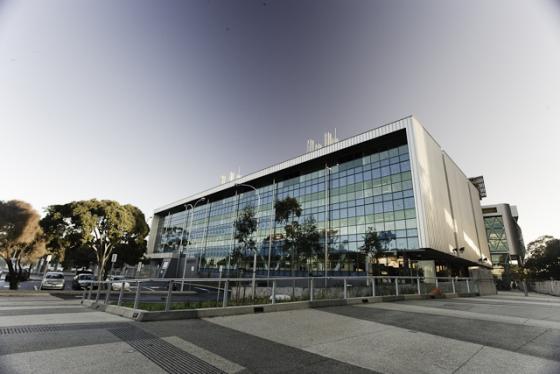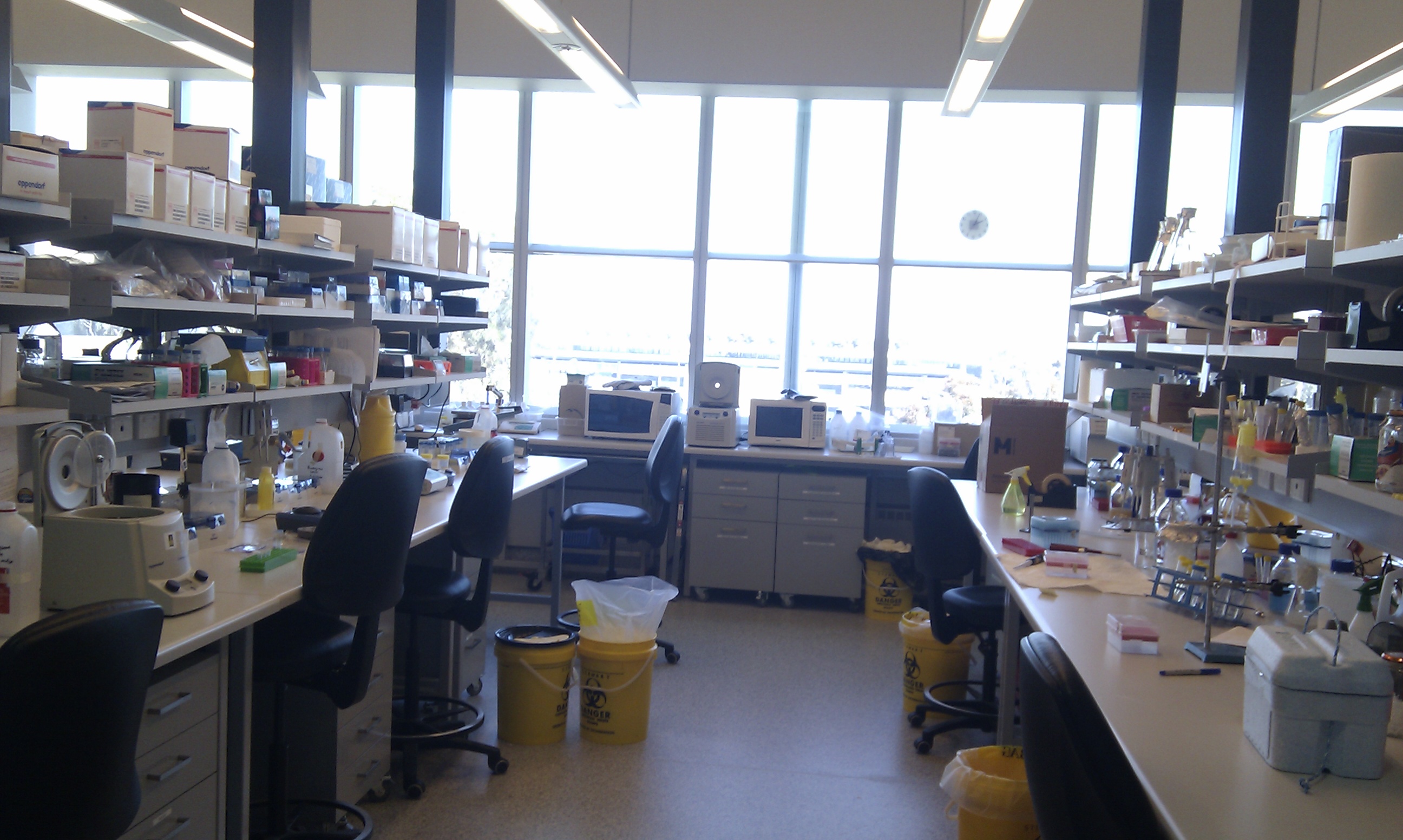Team:Monash Australia/Lab
From 2010.igem.org

|
|
|||
The Buckle Lab
Located in the Monash Science Technology Research and Innovation Precinct (STRIP), which houses some of Australias leading researchers which are developing novel products from leading edge technologies, including the Australian stem cell centre, Centre for green chemistry, and Victorian Institute of Chemical Sciences, as well as the Department of Biochemistry and Molecular Biology, The Buckle lab currently has research is aimed at understanding how the structure and dynamics of proteins dictates their function.
Current themes include:
A major axis of research focuses on the mechanism of action of proteases involved in human disease. Projects involve structure based inhibitor design using crystallography and computational techniques example is The design of inhibitors of human Kallikrein-4 (with Dr Jon Harris, Queensland University of Technology).
Using X-ray Crystallography, Small Angle X-ray Scattering (SAXS), Surface Plasmon Resonance Imaging (SPRi), Biophysics and Molecular Modelling/Simulation to understand the interaction between the Type 1 Diabetes autoantigen Glutamic Acid Decarboxylase (GAD65) and autoantibodies. In collaboration with A/Prof Merrill Rowley, Prof Malcolm Buckle (CNRS/Ecole Normale Supérieure de Cachan, France), and Dr Daniel Christ (Garvan Institute and University of New South Wales).
Computational and bioinformatics tools for structural biology: in collaboration with Monash e-Research Centre, VeRSI and the Australian Synchrotron, we develop software tools for protein structure determination, and bioinformatics tools and databases for structural biology. Recent projects include: TARDIS, Grid computing and REFOLD
We use molecular dynamics simulations to understand the role of conformational change and flexibility in protein function. This demands high performance supercomputing, such as the Monash Sun Grid and Orchard - an 800-core Apple supercomputer cluster at Monash, the largest of its type in the southern hemisphere, for example Dynamics requirements for activity of Dihydrodipicolinate synthase (DHDPS). In collaboration with Professor Juliet Gerrard and utilising BlueFern, the University of Canterbury IBM BlueGene Supercomputer.
Honours and PHD enquires should be fowarded to the [http://www.med.monash.edu.au/biochem/ Department of Biochemistry and Molecular Biology]
 Building 76, STRIP3 Monash University
Building 76, STRIP3 Monash University
 Buckle Lab, Within a open plan lab
Buckle Lab, Within a open plan lab
 "
"